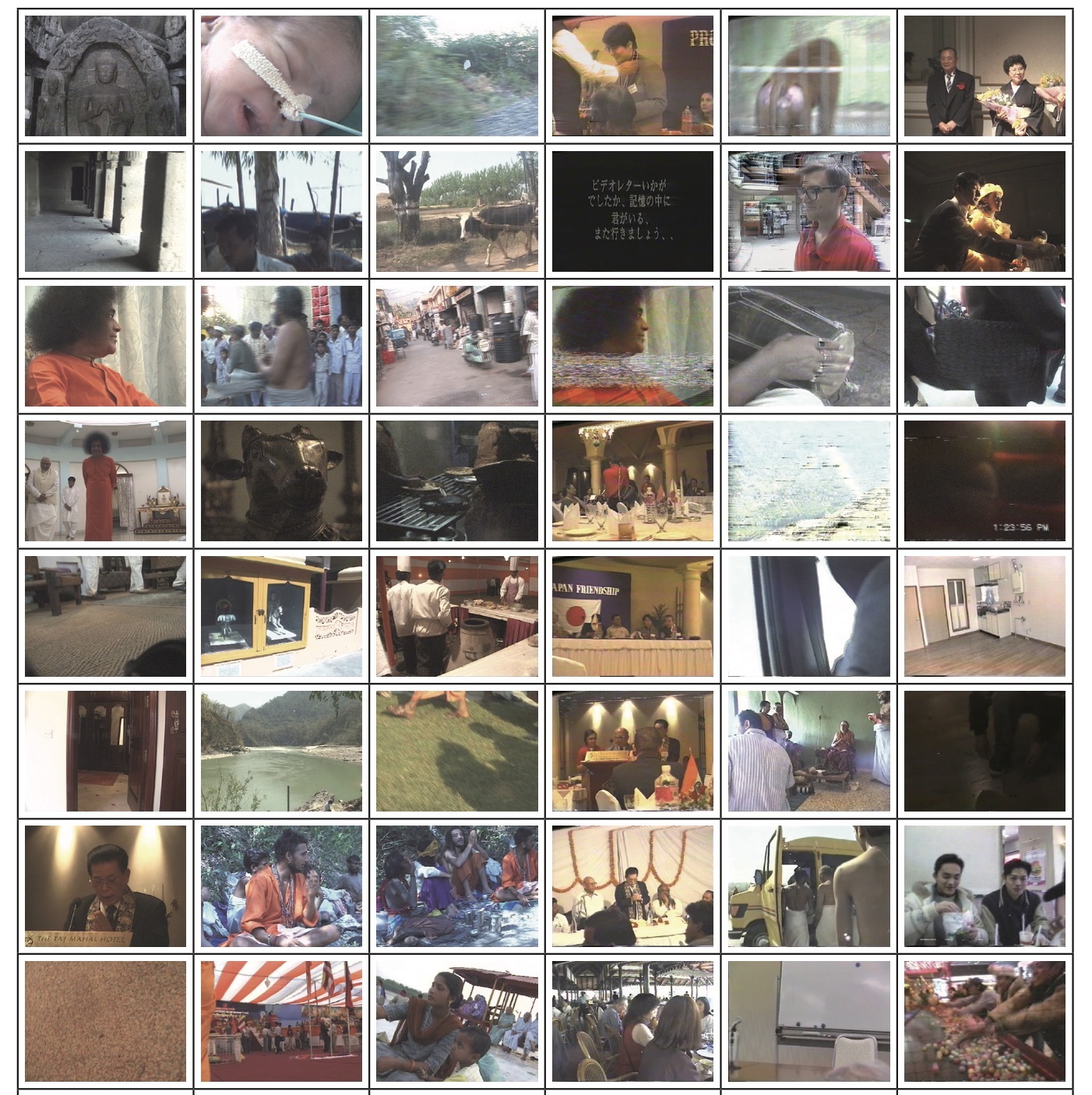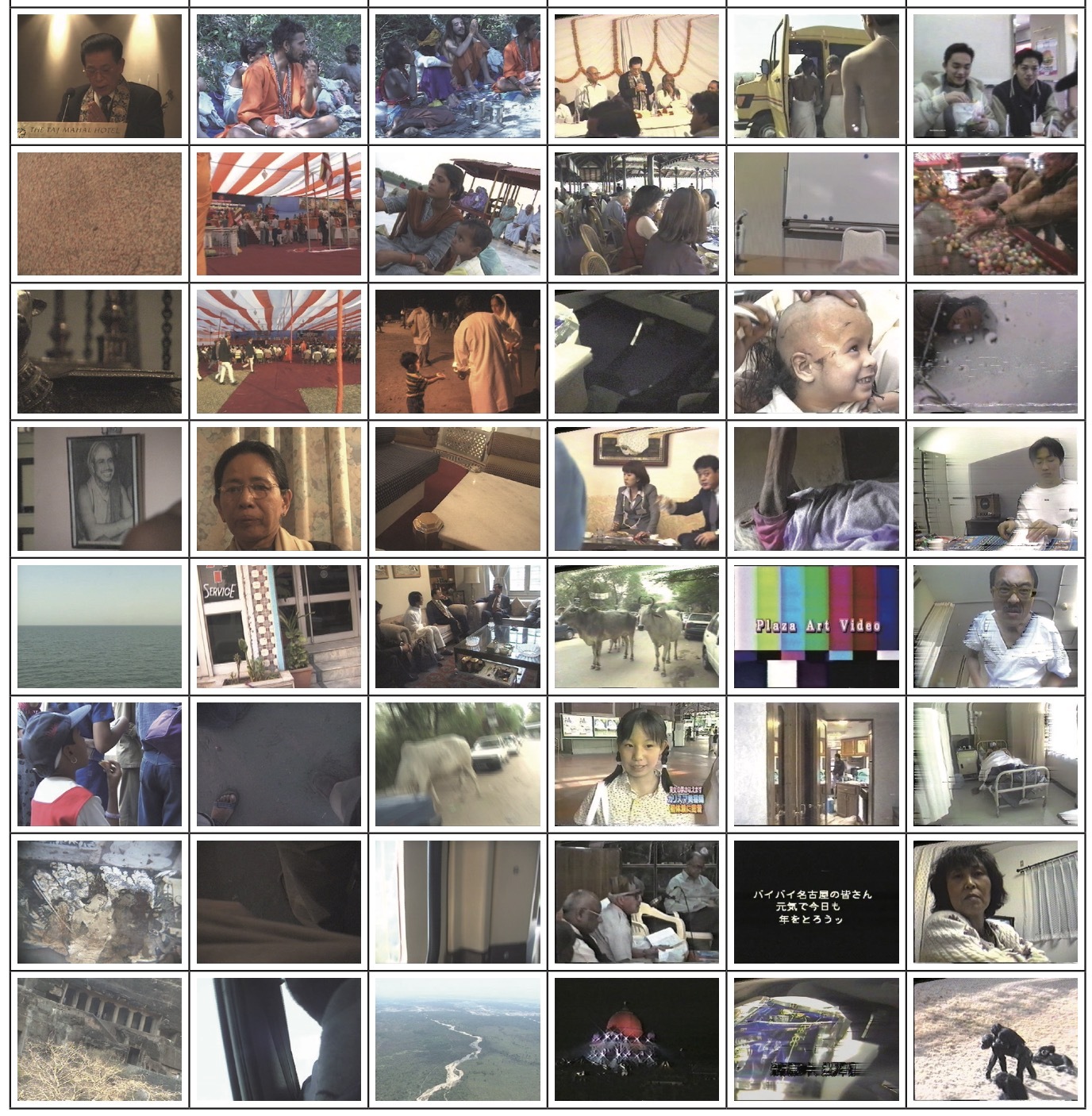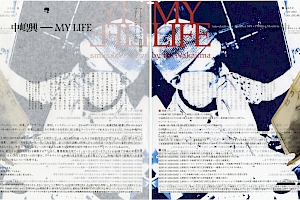Digitisation and Documentation of Video Records of Performances and Exhibitions from 1970s Onward
This project seeks to reframe post-war to contemporary Japanese media arts within the context of “intermedia.” Focusing on video art-related materials that document performances and exhibitions situated at the intersection of art and film history along with the broader landscape of contemporary artistic practices, the project aims to build a foundation for a more thorough examination of Japanese media art history by digitising and documenting these records.
- Contact
Hitoshi Kubo
pj.ca.oiek.c-tra@sevihcra
News and Activities
Events
【VIC database ver2】
Above is the second version of the VIC database.
Thumbnails of all digitized videotape images are available for viewing, and some of the data includes content descriptions and commentaries.
Background and Rationale of the Project:Capturing ephemeral works (or events) through video documentation, constructing a media art history beginning with video art
Since around the 1970s, many artworks have taken forms that are fundamentally different from traditional media such as painting or sculpture. These works often exist in transient and difficult-to-reproduce forms, such as performance or installation. Thus they can only be accessed through documentation or related materials. This period also saw the emergence of works that combined new and old technologies and crossed the boundaries of conventional genres. While photography was still the main format for documenting such works, many video recordings were also created during this time. These moving image records are invaluable for capturing the temporary and ephemerality of such works. A significant number of these video documents can be situated within the category of video art.
Video art from this period addressed a range of issues that overlapped with the history of experimental film. It also functioned as an “intermedia” structure linking multiple artistic disciplines, as a form of documentation for ephemeral works and events, as a site for experimenting with new modes of communication, and as a critical reflection on existing media technologies. In other words, within the framework of video art, we find a wide range of crucial developments and concerns that define the field of media art.
Looking back at the postwar period, the idea of synthesis of the arts was treated as a central concern and developed in various forms through the activities of groups such as the Sōgō Bunka Kyōkai, Seiki no Kai, Yoru no Kai, and Jikken Kōbō, followed by the Sōgetsu Art Center, “Cross Talk/Intermedia,” and Expo ‘70 in Osaka. These developments can be broadly framed as the “intermedia” problem. At its core, this involved exploring methods of connecting and stimulating different artistic disciplines in order to break through the stagnation of individual fields or to seek new directions. While also engaging critically with emerging technologies. Even after the 1970s, the “intermedia” problem continued to hold significance, though not always in explicit terms. It developed in various forms, such as through initiatives like arts-uni and ARTC, and in 1997, the establishment of the ICC (NTT InterCommunication Center) introduced the cross-disciplinary concept of “intercommunication.” However, it must be acknowledged that this tendency often became generalised as an issue of technological interdisciplinarity. The primary arenas for this line of inquiry were performances (dance, theater, visual arts, and music, hereafter collectively referred to as “performances”) and exhibitions. This project aimed to build an archival body of materials that would support the historicisation of the“intermedia” developments since the 1970s.
Through the ongoing archival work carried out at KUAC, it has become clear that the materials related to Kō NAKAJIMAand VIC contain a large number of records documenting performances and exhibitions. Their activities are now recognised as significant not only within Japan but also internationally, drawing considerable global interest. However, many of the photographs and videotapes in these archives are deteriorating, making their digitisation an urgent task. If this work is not carried out within the next few years, there is a real risk that some of the most important records of performances and exhibitions since the 1970s may be lost.
At the same time, as seen in the growing body of international research on “Mono-ha,” a representative example of ephemeral artistic forms, there is increasing global interest in Japanese art created in the 1960s and thereafter. Research into Japanese video art offers many potential responses to this interest and has the capacity to contribute significantly on an international level. This project aims to recover ephemeral works or events through video documentation and to construct a media art history beginning with video art, using the archival materials related to Kō NAKAJIMA and VIC, since both were central to the video art since the 1970s.
The specific work carried out includes the digitisation, documentation, creation of thumbnail images, and catalogue organisation of Kō NAKAJIMA’s and VIC’s videotapes (including related physical materials). A public VIC video database was also developed. FInally, an event was held to explore the relationship between singular events and their documentation, using theatrical video recordings as models.
●2024 Media Arts Promotion Support Project: Digitisation and Documentation of Video Records of Performances and Exhibitions from 1970s Onward
This project reexamines postwar to contemporary Japanese media arts through the lens of “intermedia,” with particular focus on video art-related materials that lie at the intersection of art history and film history, as well as within the broader landscape of contemporary artistic practices. By digitising and documenting these materials, the project aims to build a foundation for more detailed and critical engagement with the history of Japanese media arts.
The “intermedia” problem can be described as a methodological inquiry into how different artistic fields can be brought into contact and mutual stimulation, either to overcome the limitations of their respective disciplines or to search for new forms of development. It also involves a critical examination of emerging technologies. One of the key arenas for this inquiry has been performance—across dance, theater, visual art, music, and exhibitions.
Focusing on these records found in materials related to Kō NAKAJIMA (1941-2025) and the Video Information Center (VIC, founded in 1972), both held by Keio University Art Center, the project has worked to digitise, document, and catalogue videotapes and photographs in order to shed light on how the “intermedia” problem was explored since 1970s. As part of this effort, the project digitised, documented, and created thumbnail images for the NAKAJIMA and VIC videotapes, as well as organised them into a structured catalogue. A public VIC video-related database was also created (scheduled for release in April 2025).
In addition, the project hosted the event VIC x KUAC Cinematheque 3: Situation Theater’s “Karanban: Kenrō Toshi Screening—On Singularity and Repetition, or On the Record (1 February 2025). The event set up a space for reflecting on VIC’s significance. The project builds on and further develops the Media Arts Archive Promotion Support Projects of fiscal years 2020, 2021, and 2022, Digitisation and Documentation of Video Art Materials Centered on Kō NAKAJIMA and VIC I, II, III (hereafter “the 2020-22 projects”), as well as the 2023 project called Digitisation and Documentation of Video Records of Performances and Exhibitions from the 1970s Onwards (hereafter “the 2023 project”).
●2023 Media Arts Promotion Support Project: Digitisation and Documentation of Video Records of Performances and Exhibitions from 1970s Onward
This project seeks to reframe post-war to contemporary Japanese media arts within the context of “intermedia.” Focusing on video art-related materials that document performances and exhibitions situated at the intersection of art and film history along with the broader landscape of contemporary artistic practices, the project aims to build a foundation for a more thorough examination of Japanese media art history by digitising and documenting these records.
Following the post-war activities of groups such as the Sōgō Bunka Kyōkai, Seiki no Kai, Yoru no Kai, and Jikken Kōbō, and continuing through the Sōgetsu Art Center, “Cross Talk/Intermedia,” and Expo ‘70 in Osaka, the idea of the synthesis of the arts was seen as a central concern and developed in a variety of forms. These developments can be broadly understood as part of what came to be known as the intermedia problem. This involved a search for methods that could bring different artistic disciplines into dialogue with one another, either to overcome the stagnation within individual fields or to explore new directions, while also engaging critically with emerging technologies. The issue of intermedia continued to hold significance after the 1970s, unfolding in many different ways, but it arguably did not become a clearly defined focus until 1997, with the founding of the ICC (InterCommunication Center), which introduced intercommunication as a cross-disciplinary theme. One of the key sites for this exploration was performance, understood here to include activities across dance, theatre, visual art, and music, as well as exhibitions. This project aims to construct a body of archival materials that reflects these intermedia developments since the 1970s and supports their historical study.
Specifically, the project focuses on materials related to Kō NAKAJIMA (1941-2025) and the Video Information Center (VIC, established in 1972), both held by the Keio University Art Center (hereafter KUAC). By digitising, documenting, and cataloguing video tapes and photographs that record performances and exhibitions, the project aims to shed light on how the intermedia problem was explored from the 1970s onward.
In the course of building this archive, it has become clear that the materials related to Kō NAKAJIMA and VIC contain a significant number of performances and exhibition records. Their work is now recognised as important not only within Japan, but also internationally, drawing global interest. However, many of the photographs and videotapes included in these collections are affected by mold, vinegar syndrome, or binder degradation. This makes their digitisation an urgent priority. If these materials are not digitised within the next few years, there is a real risk that a portion of the crucial records from the 1970s onward will be lost. For this reason, the project aims to stabilise and preserve the videotapes, convert them into digital data, and document them properly. Addressing this issue is an immediate challenge, and the project seeks to respond to it directly.
In addition, through the production of the latest version of Kō NAKAJIMA’s My Life and an accompanying study group, the project connects these archival materials with contemporary creative practices and carries out research on the “intermedia” problem from the 1970s and onward. Building on last year’s “My Life Study Group II” (held on 31 January 2024 at KUAC), the project also aims to make use of the fact that our office functions as a university-based research institute, and to incorporate the VIC and Kō NAKAJIMA archives into university-level education.
- Digitisation and Documentation of Video Records of Performances and Exhibitions from 1970s Onward
- Digitalization and Recording of Video Art Related Materials of Ko Nakajima and VIC
- Cultural Narrative of a City
- “Architecture of Keio” Project
- Video Information Center and Documentation of Art in 1970s Japan
- #MuseumFromHome at KUAC
- SHOW-CASE project
- Research Project on Tokyo Biennale 1970
- Meeting Artists in Keio
- Genetic Engine
- Butoh: A Body Over the Edge
- Arts Management educational program


